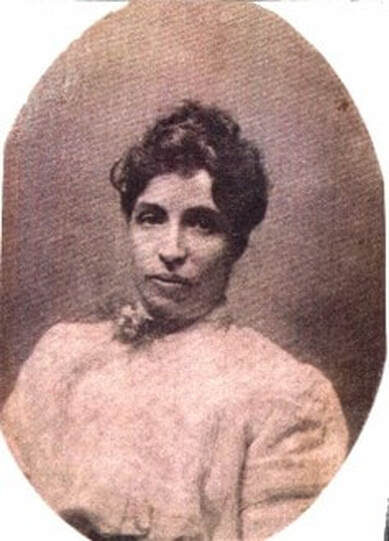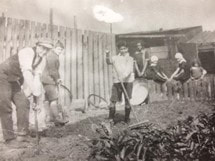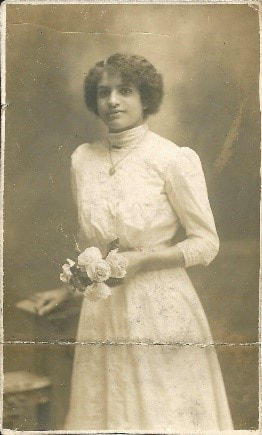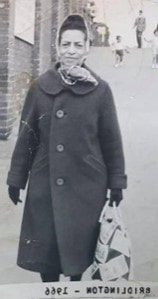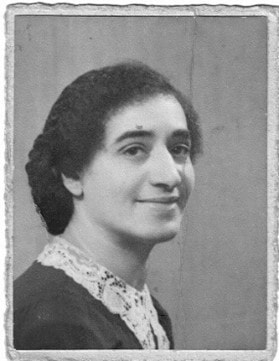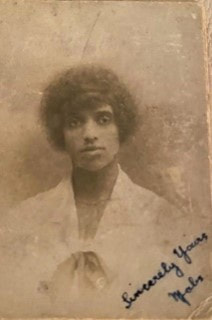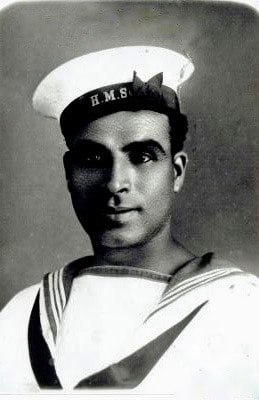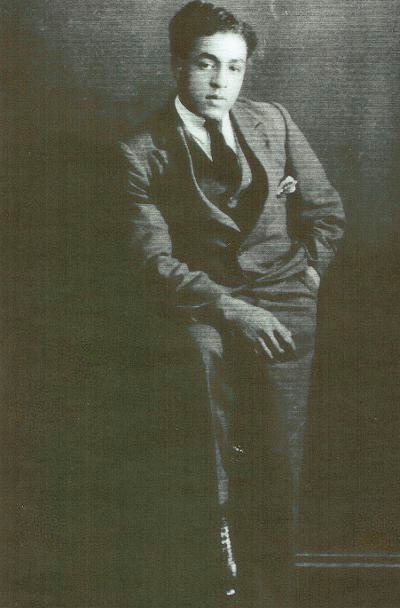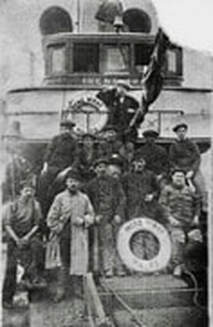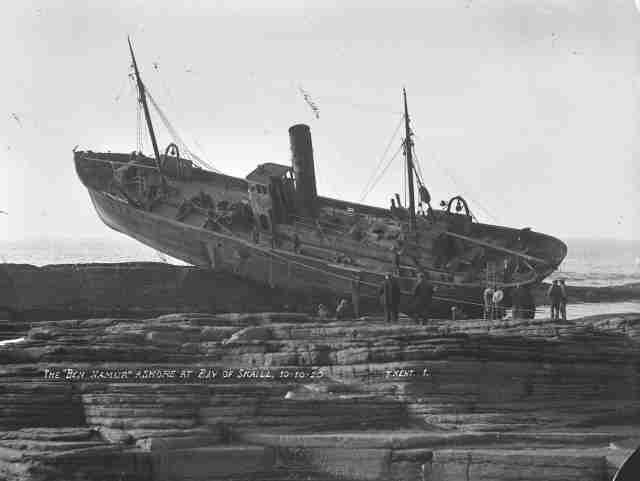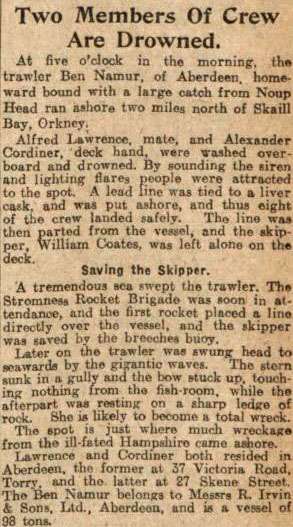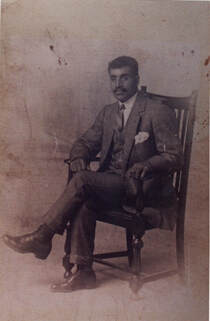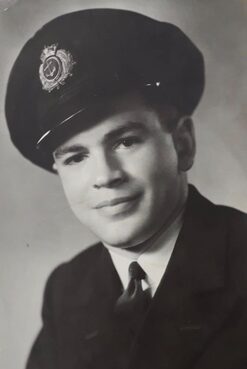Alfred Lawrance was born in around 1864 in Barbados. [1] There is scant documentation for Alfred’s parents however Alfred’s own wedding certificate tells us that his father Harry Lawrance was a carpenter and his mother was Cherry Deazle (Dizzel) Riley. Harry would have been born around 1832, just two years before slavery was abolished.
The origins of the surname Lawrance is unclear however recent work to document plantation ownership in Barbados has identified Henry Lawrance as a Scottish owner. Given the common practice of slaves being given the surname of plantation owners or overseers, it is possible that this is how the family surname originated.
The location of Harry's death is recorded as Harpers Land, St Michaels Parish in Barbados in 1879 where his age is listed as 47 years old. Cherry had been born circa 1826 and had possibly been married before to Frank Obetta Riley, with whom she had a son called William Riley, born in 1855, a half brother to Alfred.
Although we have no evidence of exactly when, Alfred travelled to the UK, possibly leaving after his father Harry died. Alfred may have even travelled with his half-brother William Riley, who appears in records in Burntisland Fife, Scotland around the same time that Alfred was in Scarborough. The family’s belief, passed down through the generations, is that William stowed away on a sugar trader and earned his passage on the ship by boxing, as he was a big man. Both men settled on the east coast of the British Isles, which raises interesting questions about what drew them there. The transatlantic ports of Liverpool, Glasgow and Bristol would seem to be more obvious destinations for ships plying trade from the Caribbean, however, there was a thriving maritime industry in Scarborough during the 1800s.
A number of vessels were built and registered from Scarborough with many families, crew and captains extensively involved in the maritime sphere widely spread across the globe including in the Caribbean:
A number of vessels were built and registered from Scarborough with many families, crew and captains extensively involved in the maritime sphere widely spread across the globe including in the Caribbean:
“W.J. & R Tindall owned 20 ships out of Scarborough in 1851, Thomas Burlinson Walker had 21 ships, William Wear 7, Matthew Smith 6, Thomas Hick 5, Pantland Hick 4 and George Willis 4.
Tom Whelan, once master of the Tindall brig "Tay", later joined the Hicks fleet and was master of their barque ‘Hope’, sailing out of Aden. Captain William Whelan was master of Richard Mosey's barque ‘Coquinbo'. Mosey also had the ‘Hannah Robinson’ in the West Indies trade. Captain Thomas Hick was in the Quebec trade but returned home to Scarborough. Captain Pantland Hick of York Place had five sons, all master mariners.” [2]
Tom Whelan, once master of the Tindall brig "Tay", later joined the Hicks fleet and was master of their barque ‘Hope’, sailing out of Aden. Captain William Whelan was master of Richard Mosey's barque ‘Coquinbo'. Mosey also had the ‘Hannah Robinson’ in the West Indies trade. Captain Thomas Hick was in the Quebec trade but returned home to Scarborough. Captain Pantland Hick of York Place had five sons, all master mariners.” [2]
|
It may not then be surprising that some immigrants found themselves settling on the east coast of Yorkshire. Our first documented evidence of Alfred in Scarborough is in the 1881 census, where he is recorded as lodging in the family home of John Scotter at 17 St Mary’s Street, Scarborough. He was recorded as being 17 and a fisherman. Alfred met Harriet Richards and married her on 14th April 1884 in Scarborough at the Parish Church. Harriet was living in Scarborough with her parents - Steven Roots (a baker) and Mary Ann Roots at the time. They had originally lived in the Middlesex area, where she was born, prior to moving north.
Alfred was recorded on the wedding certificate as being a sailor so it is likely that he would have been working out of Scarborough harbour on fishing trawlers. Their eldest son, Alfred Victor, was born in 1886 followed by Mabel Ethel in 1891. At the time, the family were living at 1 Custom House Steps near the harbour. In the 1891 census Alfred is recorded as being a fireman on a steam trawler.
The following year, 1892, my grandfather, Arthur Charles was born, then Essie May in 1896, Doris Henrietta in 1898, Lillian in 1899 and then Dora in 1901. By the 1901 census the family were recorded as living at 47 Princess St in Scarborough and Alfred was working on board the Evening Star steam trawler which was registered in Scarborough. At this time their eldest son Alfred Victor was recorded as being a painter’s apprentice. The danger of working on the seas is illustrated by a further reference to the Evening Star steam trawler being caught in a violent storm on the 15th November 1901 in the Scarborough Mercury, but fortunately it returned safely to port. |
Sometime between 1901 and 1904 the family moved to Torry in Aberdeen, an area close to the harbour where many families involved in the fishing industry lived in the large tenement houses. As the Evening Star Trawler had been an Aberdeen built boat from the shipyards of John Duthie, this may have been a factor in their relocation; both Scarborough and Aberdeen were thriving fishing ports on the east coast. Alfred and Harriet had three more children, Henry in 1904, Lionel in 1908 and Harriet in 1911.
Note: click each picture to view.
|
For the years leading up to the First World War, the family are recorded on electoral registers as living in Torry, Aberdeen. Although the reasons why are not clear, Alfred seems to have relocated to Hartlepool around 1914 - possibly working in the Royal Navy Reserve (RNR) on the trawler The Irene Wray, which was commandeered by the Navy as a minesweeper. These were required as many sea mines peppered the North Sea bed during the war, planted by the Germans to disrupt trade on the east coast of the UK. Arthur Charles served in the RNR in the First World War as a sailor, and then skipper of The Vroby based in Fishguard. After the war, some of the family remained in Scotland and indeed Alfred Victor worked on trawlers out of Aberdeen Harbour.
Alfred (snr) died in 1919 in Hartlepool at 55 Howard Street of a heart condition at the age of 47. He died with his son Alfred Victor in attendance. The following year, in September 1920, daughter Doris Henrietta passed away at the age of 22, also in Hartlepool at the same address, of tuberculosis. She was recorded as being a munitions worker at the time, but may have been in Hartlepool to look after her father. Sadly for her brother, Alfred Victor was again in attendance for another family death.
|
Tragically, the following month, October 1920, Alfred Victor was drowned at the age of 34, when the Ben Namur, a fishing trawler struck the rocks and ran aground off the Orkneys during a bad storm. He and another crew member were washed overboard. He left a wife, Sarah, and son, Alfred, in Aberdeen. It is reported in the newspaper article about the shipwreck that his mother Harriet was living in Hartlepool at the time although there are no records to support this. It was a desperately sad time for the family with so much loss.
Harriet moved back to Aberdeen sometime in the 1920s and lived there until her death in 1950. Henry, Lionel, Essie Mae and my Grandfather Arthur Charles all settled in Aberdeen and had families. Mabel and the youngest daughter Harriet seem to have lived in Lancashire and West Yorkshire until their deaths in the 1970s. It has been more difficult to trace their later lives although Harriet is buried in Harehills Cemetery in Leeds. Both married and had families.
Dora also lived in Aberdeen as a single woman until 1937 when she died of tuberculosis. Lillian remained in Aberdeen as a single woman working as a governess for Harold and Ethel Rowton who were wholesale fish merchants. She lived with the family until the 1940s. After this time she left Scotland and moved initially to London but it is difficult to trace her beyond the 1940s.
|
My Grandfather, Arthur Charles, subsequently became a film star of sorts. In 1937 the renowned film producer Michael Powell made a film, set on the Island of Foula, based on the evacuation of the population of St Kilda when it became financially unviable to eke out an existence. The film ”Edge of the World” required the use of a boat and John Duffin an Aberdonian ship owner gave permission for the Golden Beam Trawler to be used [5]. The need for a crew to operate the boat meant that Arthur Charles, as skipper along with a couple of the others were included in a number of scenes in the film. I only found out about this in 2015 and was thrilled to see my Grandfather in the flesh in a film as I had never met him.
In a book written by Michael Powell, The Edge of the World. The making of the film, there is a reference to my Grandfather:
“The Golden Beam was costing us twenty pounds a day and we had a lot of dangerous scenes to stage with motor boats. Charley, the skipper, was ready for anything and so was Mr Duffin, the owner, who had come along for the ride..” |
Arthur died in 1941. At the time he was once again serving in the RNR on the Paul Rykens trawler as skipper. Following a rescue mission to a Naval ship that had been torpedoed off Scapa Flow in December 1940, Arthur Charles, who had gone into the icy water to help bring out survivors, was taken ill. He may have had a stroke. He died of a further stroke in January 1941, leaving his wife Ethel with three children, including my father aged 13.
|
Henry and Lionel, both born in Aberdeen were also seafarers. Henry served in the Royal Navy as a Radio Officer, receiving a medal for his service awarded by King George. He moved back to trawling after 1943 but was tragically lost at sea in 1945 in a storm leaving a wife Harriet and young children Elizabeth and Henry. Lionel, lived mainly in Aberdeen but he is recorded as having lived in Camden Street in Hull in 1950 for a time, before returning to Aberdeen and passing away there in 1958. Some of his family subsequently lived in Hull and the Bridlington area.
Scarborough features once again in our family story in the 1950s. My father, Leonard Lawrance, worked hard to get into Marconi radio college. It is likely his Uncle Henry was not only the inspiration but may have acted as a mentor to him. He succeeded in passing his exams and in 1944 became a qualified ships radio officer in the merchant navy serving for 11 years. After this time he came out and retrained, qualifying in 1955 as a radio operator at GCHQ. He was posted to Scarborough and worked at Irton Moor, a government installation. The history of the original station dates back to 1912 when the Royal Navy established a Wireless Telegraphy station in the Scarborough area to monitor hostile shipping during the war. As an outstation of the main GCHQ site in Cheltenham, Scarborough supported the same intelligence aims. My father worked there until retiring in the 1990s.
|
My father's job was covered by the Official Secrets Act and he never shared a great deal about his work but we do know he was part of the team that was on duty during the Cuban Missile Crisis in 1962 when Irton Moor was tracking the Soviet ships Khrushchev had dispatched to Cuba to establish a nuclear capacity there. The threat to America from this act brought the world very close to all-out nuclear war and my father recalls the relief when they were able to confirm to the Government that the ships had turned back. He told me they feared they might never see their families again had the night unfolded in a different way. My father passed away in 2020 at the age of 92 and this marks the end of the Lawrance family’s link to the east coast of Yorkshire.
Footnotes
- The family name was Lawrance, but other family members also adopt the surname Lawrence.
- Maritime Heritage Centre - http://www.scarboroughsmaritimeheritage.org.uk/article.php?article=49.html
- Source unknown - Orkney Image Library - https://photos.orkneycommunities.co.uk/picture/number722.asp
- Source unknown - posted by a relative on Ancestry.co.uk
- Edge of the World (1937) Film Gorilla from 57.06 mins - https://www.dailymotion.com/video/x39x656
